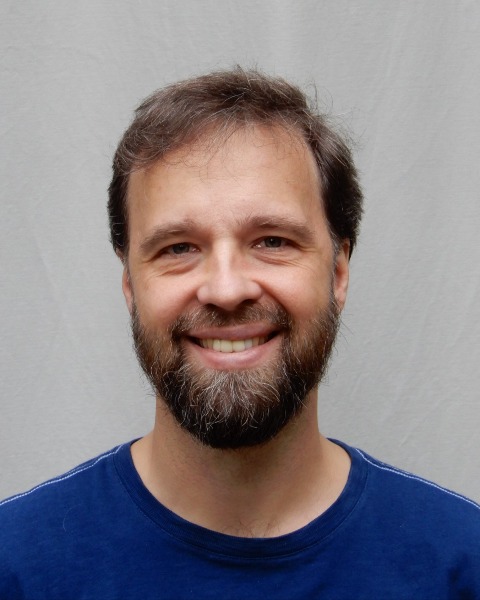Track 1/Volet 1
CS1.5: Crafting the Future: Traditional Practices and Modern Documentation
-

Ulisses Munarim, PhD (he/him/his)
Professional Staff
ERA Architects, Canada -
CA
Claude Arsenault, ing
Ingénieur en structure
Hydro-Québec, Canada -

Sharmeen Sayed Dafedar, SMArchS - MIT (she/her/hers)
PhD Student
Azrieli School of Architecture & Urbanism, Canada -

Benoit Fortin, Ing.
Ingénieur en structure
Hydro-Québec, Canada -

Gloria Frank Fite, EIT, CDT (she/her/hers)
Technical Staff III
Raths, Raths & Johnson -

Racheal Lute, PhD (she/her/hers)
Technical Staff III
Raths, Raths & Johnson -

Patrick Moore, Degree
Educator / Founder and Director
The Professional School of Practical Stereotomy, Canada
Session Chair(s)
Speaker(s)
This session has qualified for 1.5 LU|HSW Credits
In this session, presenters will share their experiences in preserving the legacy of traditional craftsmanship and the historic structures it created, while integrating new technologies and insights to ensure cultural appreciation and long-term preservation. The first half of the session will focus on the connection between cultural heritage and craftsmanship, exploring traditional practices and documentation. It will examine how craft and architectural practices intersect, engage, and influence each other in contemporary contexts. Patrick Moore will introduce participants to stereotomy, emphasizing its significance in architectural practice and cultural heritage preservation, and demonstrating its practical applications. Sharmeen Sayed Dafedar will delve into cultural building-craft practices and their interactions with architecture, drawing from experiences in Srinagar, Kashmir. The second half of the session will address evolving maintenance philosophies and the role of investigation, documentation, monitoring, and modelling in the preventive maintenance of historic structures. Gloria A. Frank Fite and Racheal D. Lute will discuss how early settlers utilized traditional French vernacular timber construction methods in Ste. Genevieve, the oldest permanent European settlement in Missouri. They will compare three remaining “poteaux-sur-sole” homes in the Ste. Genevieve National Historical Park, highlighting the development of tailored treatment recommendations for each house’s preventive maintenance. Claude Arsenault and Benoit Fortin will present how Hydro Quebec uses a digital model to predict the future behaviour of the Beauharnois Hydroelectric Power Station’s structure in Quebec, which is affected by the alkali-aggregate reaction (AAR) in concrete. They will also discuss the interventions implemented to ensure the power station's safety in the coming years.
HSW Justification
All four learning objectives relate to the HSW topics of project planning and design, project development, and documentation. The study of traditional building crafts, preventative maintenance and modeling has a direct impact on the long-term structural performance of building materials and assemblies, and is a key factor in preventing loss of life or property, and enhancing the user experience and welfare within these structures.
Learning Objectives:
- Upon completion, participants will be able to discuss the significance of traditional craftsmanship in architectural practice and cultural heritage preservation.
- Upon completion, participants will be able to distinguish the intersection, interaction, and mutual influence of craft and architectural practices in modern contexts.
- Upon completion, participants will be able to recognize the importance of knowledge and awareness of traditional materials and craftsmanship in the preventive maintenance of historic structures.
- Upon completion, participants will be able to investigate how to utilize a digital model to accurately forecast the future behaviour of a historic structure.
Presentations:
-
2:00 PM - 2:20 PM EST(CS1.5) The Art and Science of Stereotomy – An Organic Holistic Technology
Speaker: Patrick Moore, Degree – The Professional School of Practical Stereotomy
Session Chair: Ulisses Munarim, PhD (he/him/his) – ERA Architects
-
2:20 PM - 2:30 PM EST(CS1.5) The practice of cultural building-crafts in Kashmir; Exploring the cultural building-craft practices and their interactions and engagement with architecture in the Old City of Srinagar.
Speaker: Sharmeen Sayed Dafedar, SMArchS - MIT (she/her/hers) – Azrieli School of Architecture & Urbanism
Session Chair: Ulisses Munarim, PhD (he/him/his) – ERA Architects
-
2:30 PM - 2:50 PM EST(CS1.5) Keeping up with the Cabins: The Effects of Differing Stewardship on Three French Colonial Vertical Log Homes in Ste. Genevieve, Missouri
Speaker: Gloria A. Frank Fite, EIT, CDT (she/her/hers) – Raths, Raths & Johnson
Speaker: Racheal D. Lute, PhD (she/her/hers) – Raths, Raths & Johnson
Session Chair: Ulisses Munarim, PhD (he/him/his) – ERA Architects
-
2:50 PM - 3:10 PM EST(CS1.5) Preserving the Beauharnois power station, back to the future
Speaker: Claude Arsenault, ing – Hydro-Québec
Speaker: Benoit Fortin, Ing. – Hydro-Québec
Session Chair: Ulisses Munarim, PhD (he/him/his) – ERA Architects

.jpg)
.jpg)


